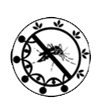The dengue vectors, are container breeders; they breed in a wide variety of artificial and natural wet containers/receptacles, preferably with dark coloured surfaces and holding clear (unpolluted) water.
Dengue vector breeding sites are found within and outside houses/premises, at ground level as well as above ground level in places such as roof gutters, overhead tanks and receptacles on slabs, and in small and large containers (Example: old tyres placed on roofs) These containers are found at any type of premises including houses, offices, hospitals, garages, commercial sites, yards containing automobile parts, schools, religious places, cemeteries, bare lands, construction sites and plant nurseries. Furthermore, water holding discarded containers along river and stream banks, railway lines are also possible breeding sites of Ae. aegypti and Ae. albopictus. However, in some instances, the breeding sites are area specific (Example: shallow cemented wells in Batticaloa and Jaffna). Ae. aegypti prefers to oviposit in artificial containers. This species is a skip ovipositor, thus, a single female mosquito lays eggs in a number of containers in a single oviposition cycle. Although Ae. albopictus is considered as a sylvatic species and breeds in natural containers such as leaf axils and tree holes, it also breeds in artificial containers in urban and peri-urban areas. Ae. aegypti shares its habitat with other Aedes species including Ae. albopictus, non Aedes species and occasionally with some Anopheles species.
The most common breeding sites of Ae. aegypti and Ae. albopictus in Sri Lanka can be classified broadly into:
- Discarded receptacles (plastic containers, tins, clay pots, yoghurt and ice cream cups, bottles, cans, damaged ceramic items, coconut shells etc.)
- Water storage containers (water storage cement tanks, barrels and other containers)
- Automobile tyres and machinery parts
- Building structures (roof gutters, concrete slabs etc.)
- Household /institutional appliances (refrigerator trays, flower vases, ornamental ponds, non-functional cisterns and squatting pans of wash rooms)
- Other artificial breeding sites (abandoned boats, cemeteries etc)
- Natural breeding sites (leaf axils, tree holes)
Indoor and outdoor breeding sites of dengue vectors
Dengue vectors breeding sites are found both indoors and outdoors. Some of the common indoor and outdoor breeding sites of Ae. aegypti and Ae. albopictus are mentioned below.
Common indoor breeding sites
- Refrigerator trays
- Flower vases
- Ornamental ponds
- Water storage tanks/ containers in the toilets, bathrooms, kitchens etc.
- Non functioning cisterns and squatting pans of toilets
- Ant traps
- Abandoned fish tanks
- Lift wells in partly constructed buildings
Common outdoor breeding sites
- Discarded containers (Ground level and on concrete slabs)
- Water storage tanks and barrels
- Shallow cemented wells and manhole service pits
- Ornamental ponds
- Tyres
- Flower pots
- Bamboo stumps
- Coconut shells
- Roof gutters
- Poles in fences
- Leaf axils and tree holes
- Cemented floors
- Unused items and damaged equipment
- Iron poles used to earth electricity
- Building materials in construction sites
- Temporarily removed items
- Covering items (plastic / polythene sheets)
- Pet feeders
POTENTIAL SITES











































